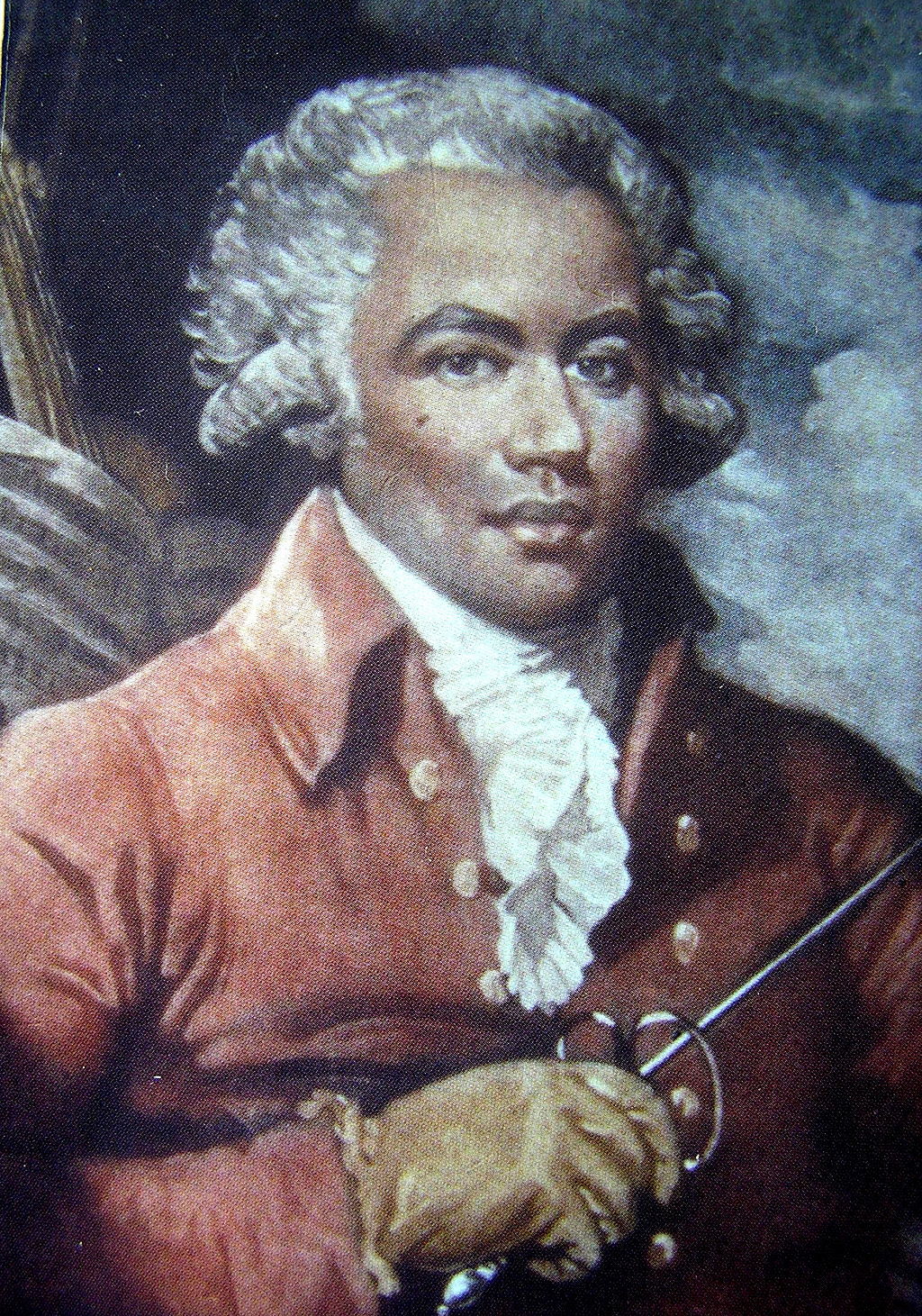What we can learn from the first movement of Le Chevalier de Saint-Georges' Symphony Op. 11, No. 2
Joseph Bologne, commonly referred to by his title Le Chevalier de Saint-Georges, was born in 1745 in Guadaloupe. His parents were French plantation owner George Bologne de Saint-Georges, and George's mistress Nanon, an African slave. When he was still quite young, Joseph's father took him to Paris (his mother joined them a couple of years later) where his studies included two of the pursuits for which he was renowned later in life: fencing and music. He excelled in his studies, despite facing prejudice due to his race. At age 21, he earned the title of chevalier (knight), and became known as Le Chevalier de Saint-Georges.
Saint-Georges was a talented violinist. In 1771 he became concertmaster of François-Joseph Gossec's Concert des Amateurs. This performing arts society frequently premiered and performed contemporary works, including Saint-Georges own violin concertos and the symphony discussed below. Saint-Georges was promoted to director of the organization in 1773. His renown grew, and three years later, he was a candidate for the position of director of the Paris Opera. However, he withdrew his candidacy after a group of Paris Opera musicians and dancers including Sophie Arnould, Marie-Madeleine Guimard, and Rosalie Levasseur protested on the basis of his race. They petitioned the Queen in an attempt to prevent his appointment, insisting that their honor and dignity would be sullied if they had to follow the orders of a mulatto (mulâtre).
Despite this injustice, Saint-Georges continued to compose prolifically, and was a favorite of Marie Antoinette, with whom he would play duets for violin and piano. During the French Revolution, he would lead the first all-black military regiment in Europe, but was imprisoned during the Reign of Terror. Though the end of his military career was marred by his incarceration and removal from his military post, he returned to music and composing in his final years.
For this post, I'll discuss the first movement of Saint-Georges' Symphony Op. 11, No. 2. Published in 1799, this symphony is written for a relatively small orchestra (oboes, horns, and strings). Stylistically, the first movement resembles the "Type 2" sonata commonly found in the early Classical period (often used by composers like J.C. Bach and Johann Stamitz and observed in early Mozart). Hepokoski and Darcy's "Type 2" designation describes a movement with binary form characteristics, in which the second rotation begins off-tonic in a developmental manner and later takes on recapitulatory properties (usually starting with the secondary theme). This type of sonata does not contain a true recapitulation, but a kind of hybrid development-recapitulation in its second rotation. Saint-Georges' Allegro Presto first movement illustrates the tenets of Type 2 sonata form, as well as Classical and stile galant characteristics like periodicity and clarity.
Let's begin with the exposition, or the first rotation. The first section (primary theme zone, or P) is comprised of a contrasting period (mm. 1 - 16) ending with a PAC in the tonic of D major. The beginning of the P zone is shown in Example 1, below.
Example 1: Beginning of the P-zone
A 7-measure transition (TR) leads to a medial caesura (MC) on the dominant, A, in measure 23. The hammer-blows and subsequent general pause (GP) make this moment easy for students to identify by ear (Example 2).
Example 2: MC in measure 23
Following the MC, the secondary theme zone (S) continues in the dominant key (Example 3). Of note is the contrast between the P and S zones in terms of character (forceful P and gentle, delicate S); this contrast provides an opportunity for discussion of gendering in sonata form, specifically A.B. Marx's classification of the first and second themes as masculine and feminine, respectively.
Example 3: Beginning of the S-zone
The loosely P-derived closing zone (C) leads to a forceful post-cadential extension (codetta) in the final measures of the exposition. Next, the development section (second rotation) begins in the dominant key as expected, and is based on material from the exposition's P zone. It also references the triplet figure in the violas at the beginning of the C (measure 48). The retransition (RT) beginning in measure 84 leads us to a reprise of the MC in measure 91, after which the second rotation begins to take on recapitulatory properties. The reprisal of the S zone at the tonic level (followed by the C-zone and codetta) reinforces the recapitulatory aspects of the second half of this rotation (Example 4).
Example 4: Second half of the second rotation becomes recapitulatory
While the harmonic and structural characteristics of this movement are useful for discussion both early sonata form and binary form, the stylistic elements are also valuable, such as the horn/fanfare topic in the P zone and elements of the stile galant and empfindsamkeit in the S zone. Students can be invited to discuss how these different stylistic ideas impact hermeneutic interpretation.
Aside from these broader observations, this movement also contains a variety of basic theory examples, including (but not limited to):
- Cadences (half, authentic)
- Contrapuntal expansion and passing chords
- Melodic sequence
- Dominant pedal
- Ornamentation (especially chromatic and diatonic passing tones, and neighbor tones)
- Modulation to closely related keys (including E minor in the development section)




